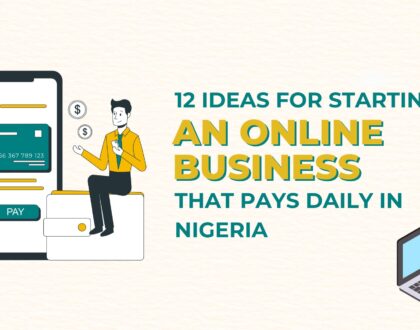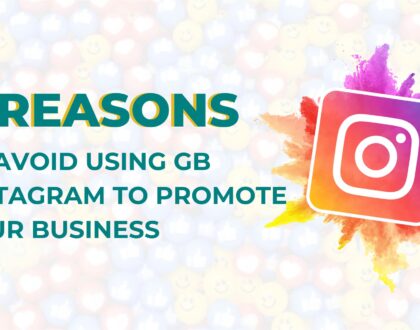9 Innovative Techniques for Solving Problems in Your Business

Entrepreneurs do run out of creativity when faced with tough challenges in the art of turning ideas, resources and people into products, systems and teams that drive commerce.
In the middle of all the hats business owners have to wear to make their business work, they often have to tap deep into their creative side (what you call ‘thinking out of the box) to tackle difficult problems that arise in business.
However, many entrepreneurs don’t do this, either because they are caught up in the day-to-day management of their business(es) or making decisions.
The creative part of the business is often outsourced to other people who may either do outstanding work to solve persistent problems or further worsen the situation.
If you’re an entrepreneur experiencing creative hunch and looking for ways to keep your mind thinking of answers to problems in your business, this article is for you.
By the time you finish reading this piece, you’ll harness your full creative potential, become a more adept problem solver, and cultivate an innovative mindset.
But first, let’s see why business owners experience creative blockades in the first place.
Why Your Creative Flames Get Snuff Out
There are three main reasons why your creative juices may be drying up:
a. Focusing too much in your business, instead of on your business
It’s easy to get sucked into the operational side of your business and forget to take time to innovate new systems, market tactics or processes that boost growth.
Once you’re trapped in the routine of day-to-day management, your creative side takes the back seat.
b. Not enough stimulants or inspirational sources
Creativity is spurred on by inspiration; it’s little wonder why artists and other creative people are constantly seeking new sources of inspiration.
For you as an entrepreneur, inspiration may come from business books, success stories, networking groups or events, revisiting your goals or even something as silly as daydreaming about how big things can get.
If stimulants do not constantly surround you, your creativity dulls.
c. Lack of new problems to solve or quests to conquer
There are business owners whose brilliance only shows when facing problems or toying with new ideas.
These are the ones that start, grow and sell a business only to repeat the process over and over again just for the fun of it.
If you are of this adventurous spirit, the lack of new problems to tackle in your business might cause your creativity to dwindle.
Now, that we’ve confronted the beast, hopefully, you’ve got your mojo back. Here are creative approaches you can take to solve problems in your business.
Creative Techniques for Solving Problems in Your Business
#1 Use Design Thinking
Design thinking primarily applies to product design or development, like manufacturing a new, physical product or building software. Design thinking is about putting human experience first in your product design process.
It’s all about making sure people find your product worthwhile. Here are the key pointers to help:
- Empathy: Put yourself in the shoes of the people affected by the problem you’re trying to solve. You get to know them, their needs, and their feelings.
- Ideation: Think of this as brainstorming. You come up with lots of different ideas to solve the problem. The more, the merrier!
- Prototyping: This is like making rough drafts. You try your ideas and keep improving them based on what people say.
Design Thinking gives you a structured, people-focused way to tackle problems. It boosts creativity and helps you develop innovative solutions for your business.
#2 Brainstorming
Brainstorming is another creativity arena to cook up solutions for business problems or challenges. You could bring your team together and ask everyone to think about pressing business problems and develop individual solutions. Or you can assign such tasks to groups of staff.
Here’s what it’s all about:
- Open Idea Generation: It’s a space where you can throw out any idea that pops into your head. There’s no need to worry about if it’s good or bad – get those thoughts out there.
- Creative Solutions: The goal is to develop cool and new ways to solve a problem. You tap into the creativity and different viewpoints of everyone in the group.
- No Judgment Zone: The best part is nobody’s here to criticise or judge your ideas. It’s like a safe space to let your creativity run wild.
So, when you brainstorm, you create a fertile ground for fresh and innovative ideas to sprout. It’s a friendly way to find creative solutions as a team.
#3 Critical Thinking
This is usually a solitary task you do occasionally to find solutions to problems in your business.
Critical thinking is systematically reasoning a problem in an organised way to solve it in your head at the end of the exercise.
It doesn’t have to be a one-day job. Some entrepreneurs take private time off for days, to think through solutions. Bill Gates, the Microsoft founder, is a prime example.
You don’t just dive into problems blindly when you’re a critical thinker. You take a step-by-step approach. You start by looking at the situation carefully and question any old-fashioned ideas that might not be true anymore.
If you focus on facts and solid reasons as sources of truth to make business decisions, your choices will be logical and make total sense, even if the results, perhaps affected by market forces outside your control, turn out bad.
#4 Leverage Cross-functional Teams
Cross-functional teams comprise a group of people with different backgrounds and skills who team up to tackle a particular project or challenge.
Hiring a diverse team of talents from different races can supercharge creativity within your business as your team can provide multiple solutions to a single problem, owing to the differences in cultures and experiences.
These teams are superb at solving tricky problems because they tap into everyone’s know-how. They gather folks with various experiences and viewpoints to develop new and clever solutions. It’s like a recipe for innovation!
#5 Prototyping and Iteration
The creative hackathon loved by startup founders, prototyping and iteration allow a business to tackle a problem with whatever solution is at hand and let the market (customers) decide whether they keep that solution or think of something new.
It is simply testing and releasing your product, new features or systems to the market, letting the demand for the release inform you if it was a hit. Then, using market feedback, you continue twitching and improving your product, service or processes until you find what works.
This is called finding your ‘product-market fit’ in startup culture.
#6 SWOT Analysis
SWOT Analysis comes handly when verifying if the opportunity you’re trying to create a solution is feasible. It’s also used to evaluate your business position and capabilities when faced with a problem or decision.
For example, if you’re considering expanding your business into a new country, you want to evaluate your strengths and weaknesses, the opportunities for growth in the new region and the threats your business might face.
With SWOT, you can closely examine all critical factors that influence a business’s positive or negative outcome and make an intelligent decision based on which outcome outweighs the other.
#7 Lateral Thinking
Lateral thinking is all about tackling problems from a different angle in a quirky and out-of-the-box way. We call it the ‘creativity hall of fame’ in business.
Imagine encountering a locked door; most folks go for the key (that’s the usual way, called vertical thinking). But if you’re a lateral thinker, you’d try something wild, like crawling through a window or using a hairpin to unlock it.
In business, lateral thinking can be your secret weapon to bypass technical or legal blockages and even outsmart competitors. There are so many examples of entrepreneurs who found ways to break through seemingly impossible problems.
#8 Mindfulness and Meditation
Mindfulness and meditation are your brain’s best buddies. We know you don’t get much time off in the early stages of your business, but a little home yoga time might do wonders to ease your stress levels and boost your creativity.
Mindfulness is all about living in the moment without being too critical. It’s like tidying up your mental space, clearing away distractions so those bright ideas can shine through.
To be mindful is to be present, whether spending time with your family or enjoying a solo movie night. Turn off your business in your mind and live in the present. You’ll be recharged the next day to tackle problems.
Meditation, on the flip side, is like a mental spa day. You sit quietly, take deep breaths, and focus on one thing, like your breath or a calming word. It chills out your mind, reduces stress, and helps those creative thoughts flow.
These two pals clear the mental clutter, making it easier for creativity to bloom. They create a headspace where ideas thrive, and you can tackle challenges with a fresh and creative mindset.
#9 Feedback Loops
Feedback loops are continuously chatting with others to improve your business, products and services. It starts with you asking people for their thoughts and opinions, like when you make a new app and want to know if people find it easy to use.
Feedback is not a one-time thing; it’s a continuous process where you regularly collect input from different players in your business: customers, suppliers, investors, partners, employees and more.
The cycle helps you keep your solutions relevant and in tune with the market’s needs so that you’re always in demand. Think of Amazon and how fast it adjusts to market demands, even setting the pace for other brands to follow.
Go Get Creative
When it comes to solving problems, creativity goes a long way. However, no single approach fits all situations. Different problems and situations require different tricks, so find and implement what works best for your business.
Stay tuned to this page for more business nuggets like this, and watch out for our business education, financing and mentor-matching platforms launching soon.
We’ve also built a community of entrepreneurs who are either turning their passions into businesses or already building their empires. Click here on our waitlist to know when we will launch this.
Recommended Posts

How to Grow Your Local Business Using Google My Business App
January 20, 2025

12 Ideas For Starting An Online Business That Pays Daily In Nigeria
October 31, 2024

5 Reasons To Avoid Using GB Instagram To Promote Your Business
October 17, 2024



